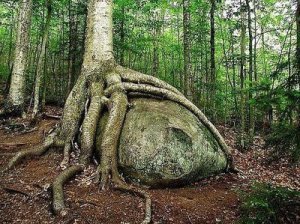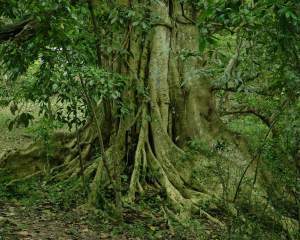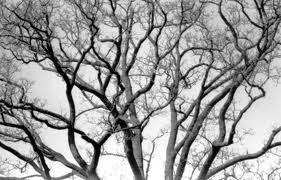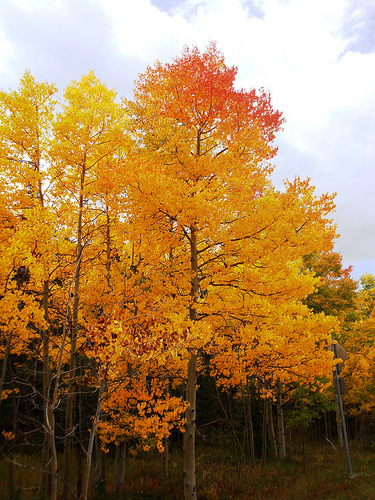Tuesday Tips: Nonfiction Books & The "IDEA" Tree
 Welcome to my new series on nonfiction book proposals. Over the next several Tuesday Tips I'll cover some of the meat-and-potatoes of choosing topics, researching ideas, and putting together a winning nonfiction book proposal. While I write primarily about pets, the same ingredients for your nonfiction book stew are the same–it's just the seasoning and presentation that may vary.
Welcome to my new series on nonfiction book proposals. Over the next several Tuesday Tips I'll cover some of the meat-and-potatoes of choosing topics, researching ideas, and putting together a winning nonfiction book proposal. While I write primarily about pets, the same ingredients for your nonfiction book stew are the same–it's just the seasoning and presentation that may vary.
I've given this talk at any number of writers conferences over the years. After writing 23 nonfiction pet books, I've experimented with several ways of creating nonfiction proposals and some work better than others. Once I found something that worked, few of the basics have changed. It all begins with what I call THE IDEA TREE.

TREE ROOTS
Everyone understands the basic structure of trees. The roots of the tree offer only secure footing to hold it upright and steady despite mudslides, wind storms or other acts of nature. The roots also feed the rest of the tree. Without the roots, a tree won't be born. Cut off the roots and it will wither and die.
The root of your nonfiction book is the CONCEPT. That basic concept must be so healthy and vital that it will weather anything thrown at it, defeat arguments before they're mounted, and answer any question an editor/agent/reader might have. Like an iceberg, the roots of your book may not be entirely seen but offer the ballast that floats the visible portion.
The CONCEPT of the book, like the tree roots themselves, must be fed with nutrients from the soil and water. A writer feeds and waters a book concept with his/her own abilities brought to bear on the project. Writing skill, research and discipline feed the concept. Individual vision/author voice pushes the work beyond the ordinary.

TREE TRUNK
The tree's trunk arises from the roots and supports the many limbs and countless leaves of the tree. The trunk bends in the breeze, and grows round obstacles. Here in Texas we have trees that grow through fences and simply make the barbed wire a part of themselves. Trees that survive let nothing stand in their way, won't take "no" for an answer, and seek solutions to problems.
The trunk of your nonfiction book is the PUBLISHER. These days, publishers must be even more flexible with greater determination than ever before to survive and succeed in supporting a book. Whether your book finds a "big 6″ publisher, smaller press, or you serve as the publisher, this vital part of the book can't act like a weenie. It must be robust, healthy, and have a no-bull-crap attitude.

TREE BRANCHES
Trees come in all shapes and sizes, from sapling burl oaks to redwoods, palms to baobob. All rely on branches that reach out, support and provide a home for the leaves of the tree. The more branches a tree has, the greater number of leaves it potentially can produce.
Consider your nonfiction book's tree branches to be the AUTHOR SALES SKILL. Even if your tree trunk publisher provides support once the book is published, it is your individual expertise, market research and promotion efforts that sell the work first to the agent or editor, and ultimately to your audience.
TREE LEAVES
How many leaves do trees produce? That depends on the health and vigor of the roots, how well the tree is fed, and the vitality of the trunk and number of branches produced. Some trees survive quite well with a limited number of leaves–which of course also do their part to feed the health of the tree. The more leaves a tree has, the better it is able to absorb sunlight and bolster the health of the branches, trunk and roots. No leaves means even an otherwise healthy tree dies.
Leaves on your book tree are the AUDIENCE. The audience may be vast or niche. As with trees, the more leaves/audience you have, the healthier becomes the book/tree. Readers who like your book spread the good news, and you gain more readers. Even when readers come and go–as leaves change color, and fall off–a healthy book/tree continually generates new ones and remains vital for years.
I know many of this blog's followers have published nonfiction work. What have I missed? Are there other important parts of the IDEA TREE that you feel are important? For those planning a nonfiction book and proposal, what are your concerns and questions? How many leaves does your proposed book have in mind?
AskAmy Sweet Tweets
Folks who "follow" me on Twitter @amyshojai and @About_Puppies are the most awesome Sweet Tweets around–they love #cats and #dogs and #pets, many #amwriting. Just follow and include the #AskAmy in your tweets if'n you're interested in pithy links to articles, books, blogs, experts, fictioning and sparkle-icity!
I love hearing from you, so please share comments and questions. Do you have an ASK AMY question you'd like answered? Stay up to date on all the latest just subscribe the blog, "like" me on Facebook, listen to the weekly radio show, check out weekly FREE PUPPY CARE newsletter, and sign up for Pet Peeves newsletter with pet book give-aways!
Filed under: Tuesday Tips, Writing Tips Tagged: Amy Shojai, books, how to write proposals, nonfiction book proposals, pet books, publishing, speaker, the idea tree, writers conference, writing












